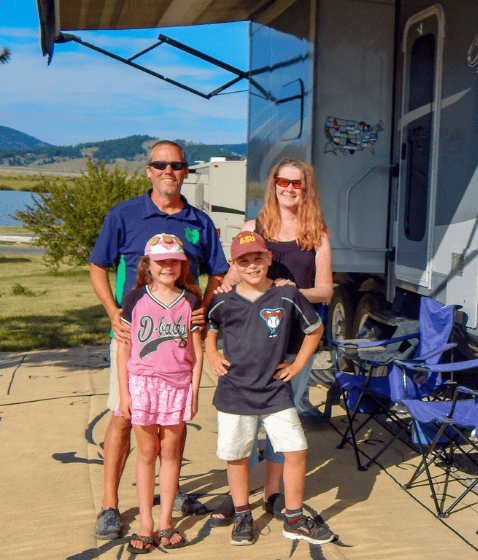Heading out on an RV trip is a very exciting time. Adventure and family fun lie ahead and you can always look forward to great food. But all of that excitement comes with some worry as well. Making sure to keep the food cold is one of the biggest worries.
Knowing how to keep the RV fridge cold while driving can make all of the difference and ensure that your food gets there fresh and there are some simple rules that you can follow to make sure.
How To Keep The RV Fridge Cold While Driving
To keep your RV fridge cold while traveling, turn the refrigerator temperature down as low as possible the day before you leave. This will provide a colder starting point, helping food stay fresh longer. Place ice packs and frozen items inside the fridge to further assist in maintaining low temperatures during your drive. Then pack as much inside as you can. The cold/ frozen food will also help keep the refrigerator cold.
In the upcoming sections, you will discover other valuable ways to manage your RV fridge temperature effectively, so you can focus on the trip without worrying about spoiled food.
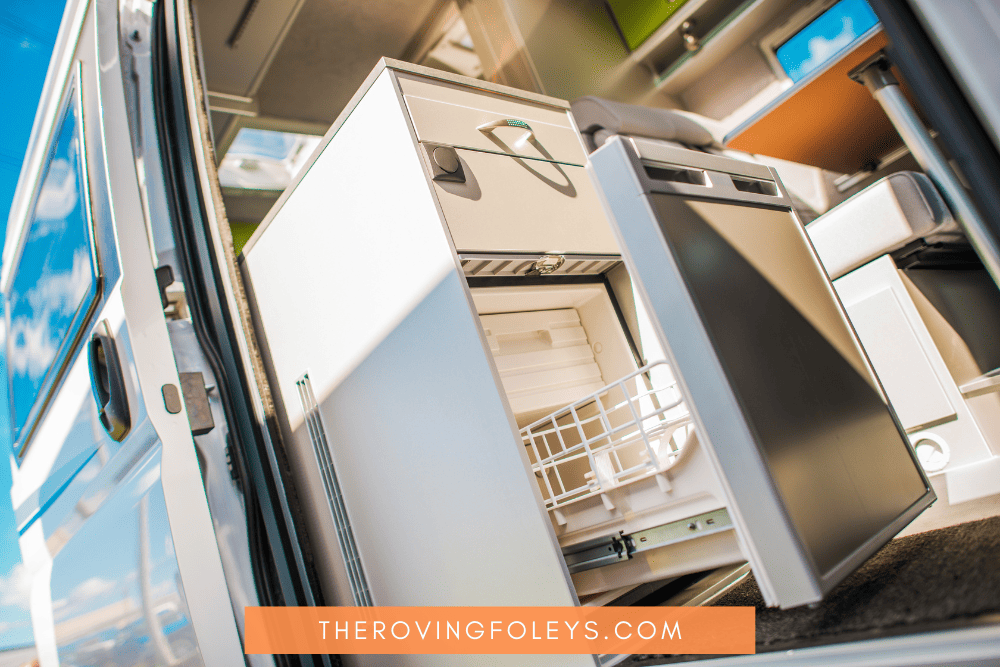
Keeping A Cool RV Fridge While Driving
1) Using Propane as a Power Source
When driving, your RV fridge can stay cold using propane gas as a power source as long as you have a propane refrigerator. However, make sure to follow safety precautions, as propane leaks can lead to fires or explosions. Keep an eye on your rv propane levels and refill your tank as needed.
Another consideration is the law – some states or regions may prohibit driving with rv propane on, so always check local regulations before using lp gas while driving.
The last consideration is rocking. Refrigerators are designed to be perfectly flat when running, so motion and rocking during travel may be harmful if the refrigerator is running.
2) Using Battery Power
Your RV is probably already set up to use battery power to keep your fridge cold. If you have a 12 volt unit, it will be simple and effective. If you have a residential refrigerator, it takes quite a bit more power, so a larger battery bank and an inverter to keep the fridge running.
3) Utilizing Generator Power
Using a generator to keep the refrigerator running is an option. Traditional onboard generators can run on gasoline or diesel ( the same fuel as your rig) and are generally safe to use while on the road.
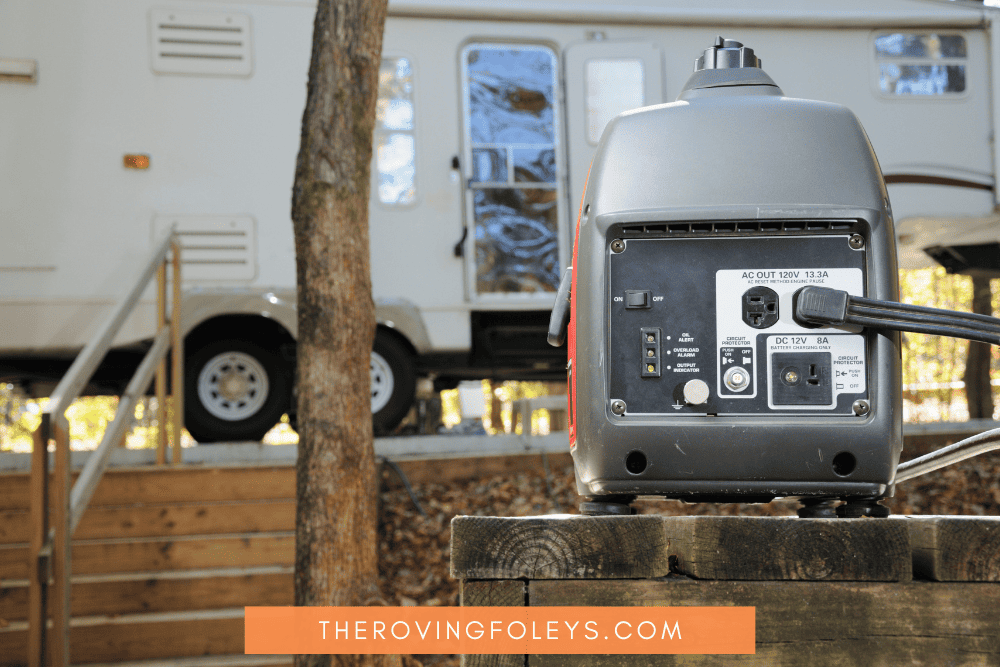
Using a portable generator is a possibility but there are a lot of safety precautions to be aware of. You must have the generator outdoors so it must be firmly held in place while traveling.
So generator use during the day should be designed to recharge the RV batteries which will then power the refrigerator through a converter at night. See your dealer or an electrician to ensure proper install.
4) Considering Solar Panels for Electricity
Solar panels are a great way to provide no-cost electricity for your camping needs. Most RV refrigerators can be run on solar-powered electricity.
If you want to run solar during travel, it can be done. Just remember that the panels will be flat during the trip so will not be getting optimal sun exposure. So you may or may not get enough power to keep up with the demand.
It is always a good idea to have another source of power (like a generator) as poor weather conditions can limit the amount of power you get. Consult an RV electrician to make sure you are set up to use multiple power sources simultaneously. It can easily be done, but requires specific equipment.
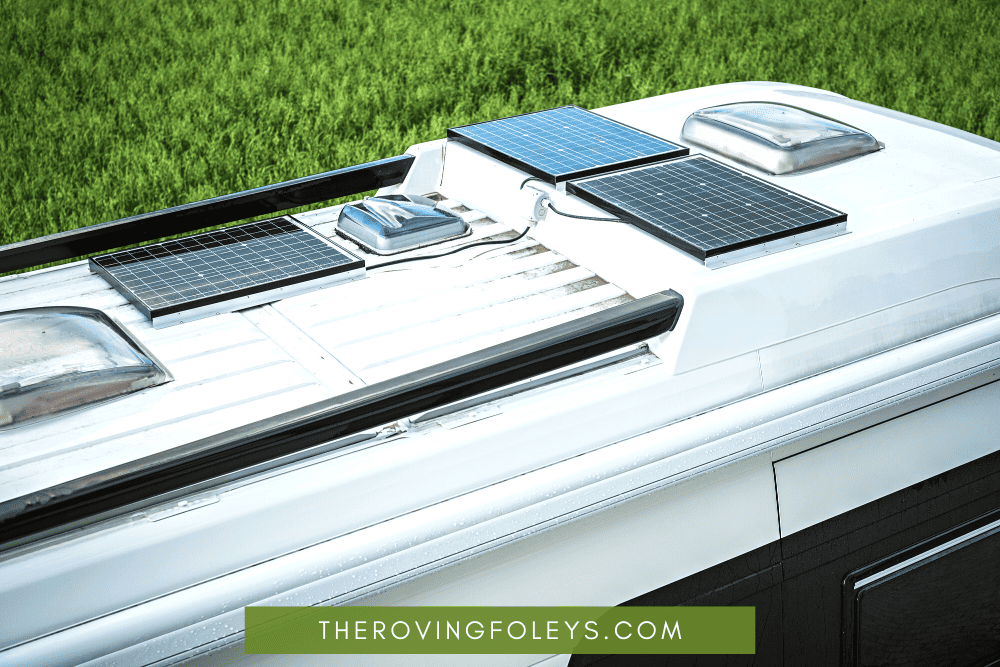
5) Ensuring Proper Air Circulation
Proper air flow is essential for keeping your RV fridge cold while driving.
- Have a fridge fan installed to circulate air inside the refrigerator, ensuring all compartments in the fridge stay cool.
- Regularly defrost your fridge to prevent ice build-up that may hinder proper airflow.
- Limit the amount of time you are in the refrigerator. The more the door is opened, the more cold air escapes, causing the fridge to run more to keep the temps down.
- Before hitting the road, fill your fridge with cold or frozen items to help maintain the temperature. You may also use ice packs or frozen drinks as temporary cold sources.
- Organize your fridge efficiently, so searching for items is quick and minimizes door-open time.
By following these guidelines and using an appropriate power source, you can ensure your RV fridge stays cold during your travels.
6) Arranging Items for Optimal Cooling
The arrangement of items inside your RV fridge plays a crucial role in its overall cooling effectiveness. Here are some tips to ensure optimal cooling in your fridge:
- Place perishable items on lower shelves: Store meat, dairy products, and other perishable items on the bottom shelves, closer to the cooling source. This ensures they stay at optimal temperatures during your trip.
- Organize items by cooling needs: Place items with higher cooling needs, such as frozen foods, on the middle shelves of your fridge. Store items with lower cooling requirements, like cold beverages and fruit, on the top shelves.
- Maintain airflow for the cooling system: Avoid overcrowding your fridge and ensure there is sufficient space for air circulation. A well-ventilated rv refrigerator can maintain its temperature more efficiently.
By following these preparation and organization tips, you will help keep your RV refrigerator cold and your food remains fresh while you’re on the road.
7) Limit the Opening and Closing of the Fridge:
While traveling, resist the urge to frequently open your refrigerator door to check on items or grab a snack. The more you open the fridge, the more you lose cold air, making the cooling system work harder.
8) Super Cool The Fridge
Before you head out, run the fridge at its coldest setting for a few hours to get it as cool as possible. This will help the cooling stay longer while you travel.
9) Use Bags Of Ice
Pack the empty spaces in the fridge with bags of ice. This will not only help to keep the fridge cold, it will help loos items stay in place while in motion. Just make sure you are careful about melting so you dont have a puddle when you get there.
10) Freeze Gallons of Water or Milk
Prior to travel, freeze a few gallons of water or milk. This will serve the same purpose as the bags of ice, but you can thaw and use these items once you get to camp. Dual purpose!
11) Install a Fridge Thermometer
Installing a fridge thermometer allows you to monitor the temperature inside the fridge without opening the door. You can easily make sure the temperature stays below 40 degrees and add cooling of necessary.
Preparation and Organization
Planning Your Food and Beverages
Planning the food for your trip is one of the most important parts of camp planning. Food is the anchor for any family outing so you want to make sure your meals go smoothly.
It is important to consider the length of your trip, and how much storage space you may have available, especially refrigerated space for perishable foods. Try to fill the fridge compartment as much as possible, as cold food will help hold the temp and work the refrigerator less.
Consider space for non-perishible foods as well, crafting your menu to use similar items in different ways, as well as using up leftovers.
Prepping and Storing Produce
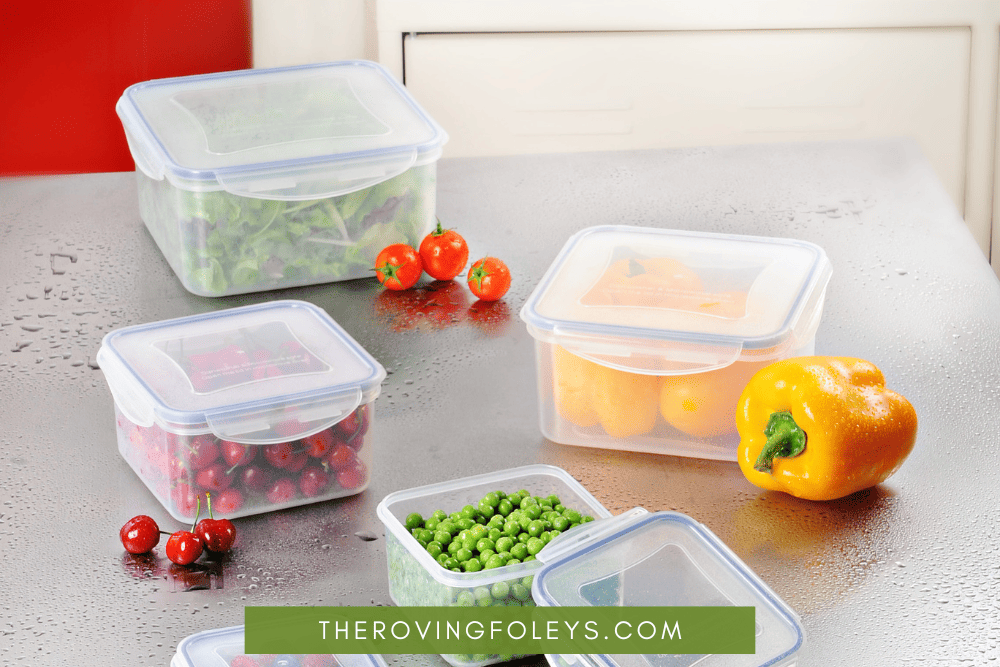
Properly prepping and storing produce is essential for maintaining the desired temperature inside your cold RV fridge.
- First, wash and dry your produce entirely before putting it inside the fridge. This helps prevent condensation and excessive moisture, which may affect your fridge’s cooling efficiency.
- Second, prioritize consuming produce with a shorter shelf life, such as leafy greens and berries, to ensure they do not spoil.
- Finally, use airtight containers or plastic bags for storing your produce to limit moisture loss and prolong freshness.
How RV Fridges Stay Cold
Knowing how to keep your food cool and your fridge running properly requires first understanding the different types of RV refrigerators and how these rv fridges work. Having this knowledge will make it much easier for you to operate and maintain your fridge properly.
Three Types of RV Refrigerators

- 1) Two-Way RV Fridges:
- Operate on two power sources: propane and 120v AC (household electricity)
- Use propane as the primary power source while driving or when parked without access to electricity
2) Three-Way RV Fridges:
- Operate on three power sources: propane, 120v AC, and 12v DC
- Use 12v DC (from your RV’s battery) as an additional power source, particularly when driving
3) Residential Refrigerators:
Residential refrigerators are becoming more and more common in RV applications. People like the large capacity as it reduces the need to shop while on the road.
However, these fridges use a tremendous amount of power, so they are not the best option for use during travel or boondocking. These are better options if you tend to use shore power.
That is not to say it cannot be done. We used a residential refrigerator for 5 years while traveling full time during which we did boondock a good bit.
We had a large bank of 4 deep cycle batteries and an inverter that was all dedicated to JUST the refrigerator.
This set-up required about 14 hours of generator run time per day to charge the batteries enough to give us 10 hours of run time overnight while boondocking. Doable, but not perfect.
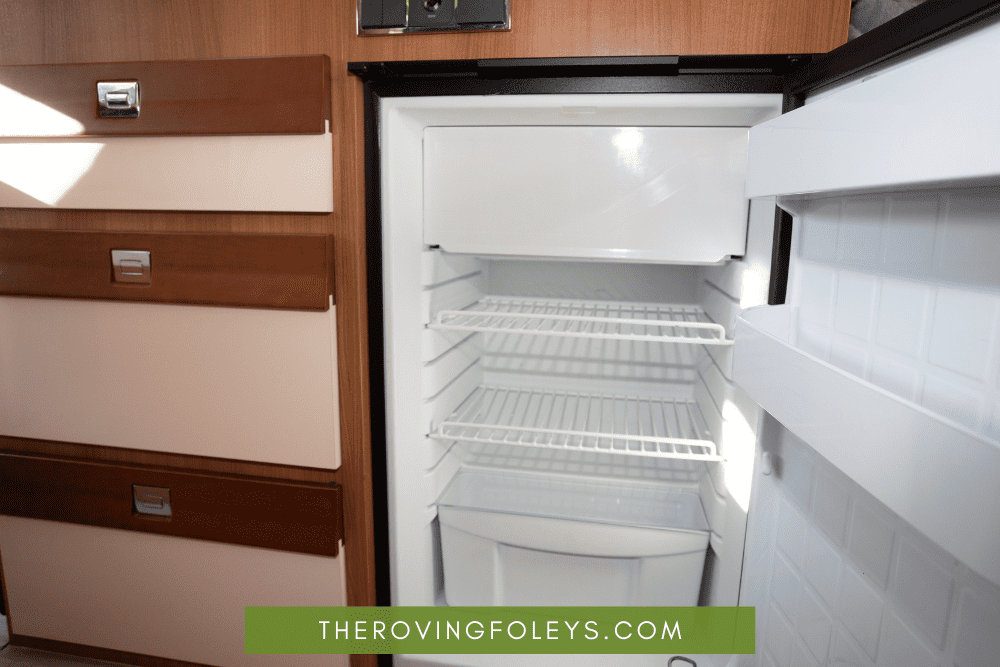
Types of Refrigeration: Vapor-Compression and Absorption
Vapor-Compression Refrigeration: This is commonly found in household fridges, but less often in RV fridges. It involves the use of a refrigerant (a liquid/gas substance) passing through a compressor, condenser, evaporator, and expansion valve.
The refrigerant absorbs heat from the refrigerator and releases it outside, keeping the fridge cool.
Absorption Refrigeration: This system is more common in RV fridges. An absorption fridge relies on ammonia as the refrigerant, along with hydrogen gas and a generator chamber.
The process involves heating the ammonia and hydrogen mixture to create a cooling effect.
The evaporator absorbs heat from the refrigerator, while the absorber captures and reabsorbs the ammonia, continuing the cooling cycle.
Safety and Maintenance
Monitoring Temperature and Motion
While driving your RV, it’s essential to keep an eye on the fridge temp and ensure it remains consistent. This can be achieved by using a simple thermometer inside the fridge.
Make sure to secure all fridge contents properly to avoid spills and damage due to vehicle motion. Installing an RV fridge fan can help with the circulation of cool air and maintaining an even temperature.
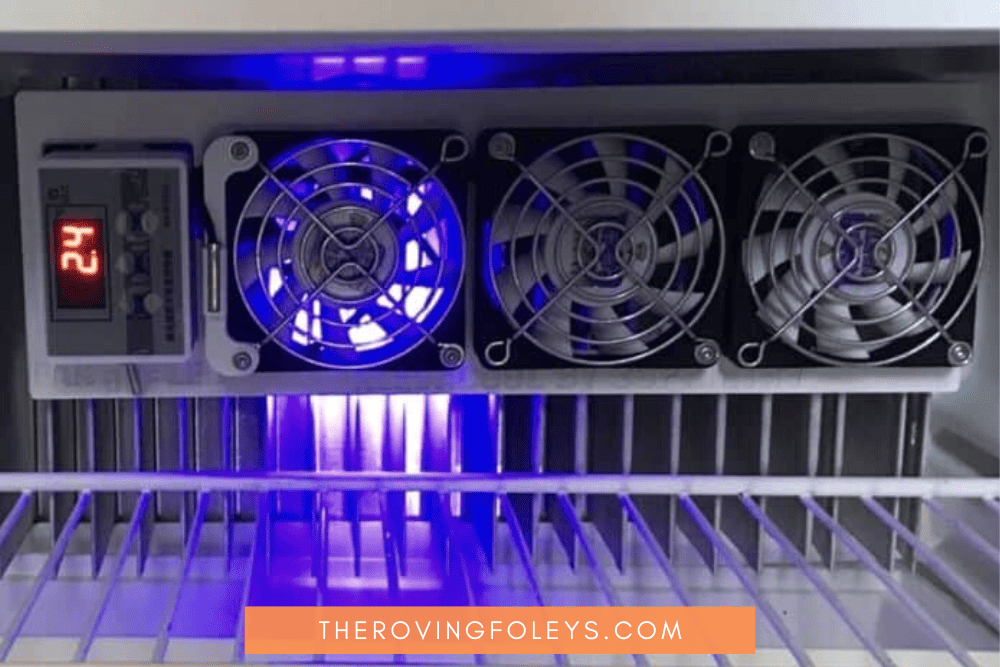
Tips for Handling Dangerous Situations
During long journeys, especially through tunnels or on rough roads, there is a risk of overheating or gas leakage from your propane system if not properly maintained. Here are a few tips to handle these situations:
- Turn off the fridge’s propane system when entering fuel stations, tunnels, or boondocking.
- Exercise caution on bumpy roads to avoid potholes which might cause the liquefied refrigerant to escape through the expansion valve. This can cause the condenser to heat up excessively due to increased molecular activity.
- Ensure your fridge’s heating components are functioning properly, as overheating can impact the depressurized state of the refrigerant and lead to dangerous situations.
Inspecting Refrigerator Components Regularly
Conduct regular inspections of the refrigerator components, especially when preparing for a long journey or after periods of storage. Some key aspects to check:
- Ensure proper operation of the propane system and check for any leaks, which can cause the refrigerator to not function effectively.
- Examine the condenser for any debris or build-up of gaseous refrigerant that could affect the heat transfer process.
- Make sure your generator is operating correctly and providing enough watts to maintain an appropriate temperature when the RV is in motion. An inverter generator with 2000-3000 starting watts is recommended for the average RV fridge.
By adhering to these safety and maintenance practices, you will be better equipped to protect your RV fridge and its contents, ensuring they remain cold and in good condition throughout your journey.
Frequently Asked Questions
Can I run my fridge on battery?
Yes, you can run your RV fridge on battery power while driving. However, keep in mind that it may drain your battery system if used for extended periods.
Make sure to monitor your battery levels and consider using alternative power sources such as solar panels or a generator to maintain power.
Can I use propane for my fridge?
Running your RV fridge on propane while driving is an option, but it’s essential to consider the potential risks.
Using propane while on the road may increase the chances of a fire or accident. Some regions and tunnels even prohibit the use of propane while driving.
Make sure to research the regulations of your travel destinations and consider other options, such as battery power or a generator, to keep your fridge cold.
How long will it remain cold without power
The duration your RV fridge can maintain a cold temperature without power largely depends on the effectiveness of your fridge’s insulation and the overall temperature inside your RV.
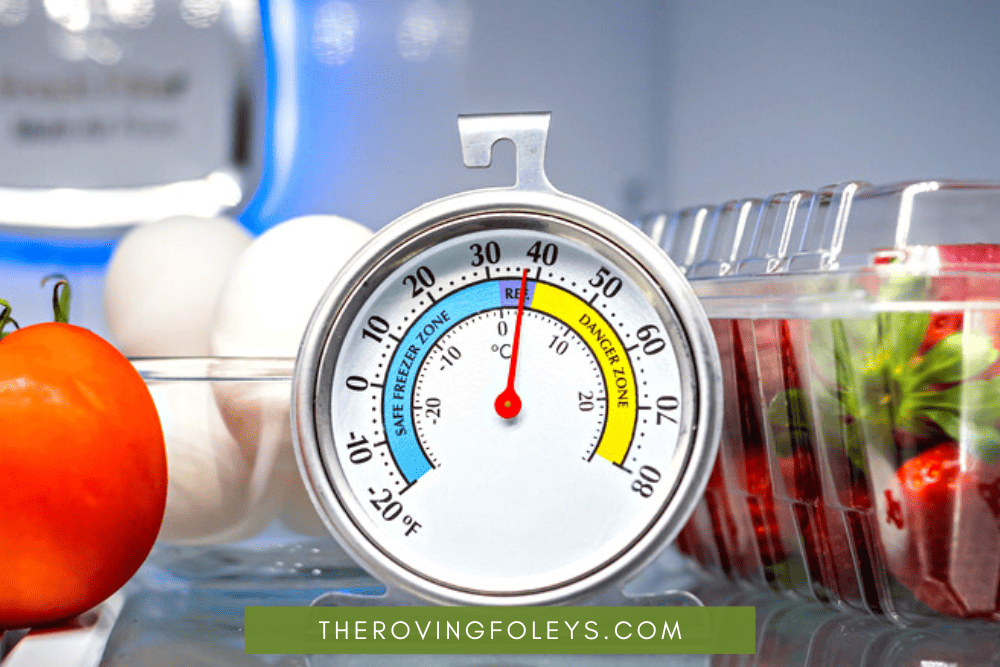
Typically, an RV fridge can maintain safe food temperatures for 4 to 6 hours without power.
It is crucial to minimize opening the fridge door, as this will cause the cold air to escape and reduce the duration your fridge can remain cold.
How do I cool the fridge quickly?
To cool your RV fridge quickly before hitting the road, follow these steps:
- Turn the fridge on and set it to its coldest setting several hours before your departure.
- Fill the fridge with cold items, as they will help to maintain the cold temperature.
- Use frozen beverages or ice packs to fill any empty spaces inside the fridge, which will help retain cold air.
Can I use an inverter?
Using an inverter to power your RV fridge is a viable option while driving if you have a 120v fridge. An inverter will convert your RV’s DC battery power to AC power needed for the fridge.
However, inverters (and refrigerators) can consume a significant amount of battery power, so it’s essential to be mindful of your battery levels and ensure your vehicle can maintain sufficient power for all essential functions.

Frank Foley
Frank is the Head Hubby, Daddy, and Fix-It Guy of the Roving Foleys clan. He ia an avid traveler and has spent over 5 years traveling full time with his family. he loves helping others learn about the RV life. He has also traveled in Europe, Asia, and Australia with his wife Grainne.

